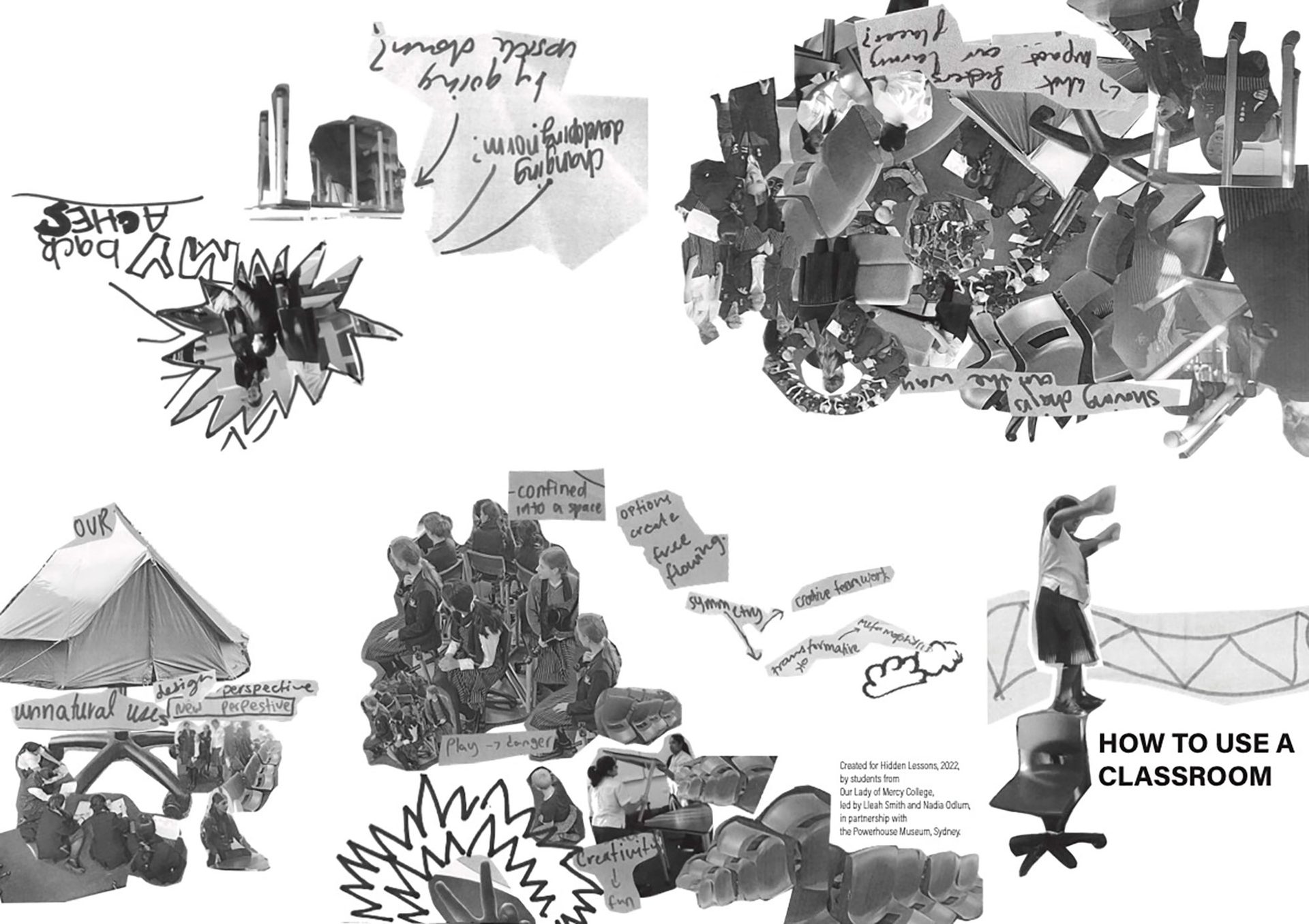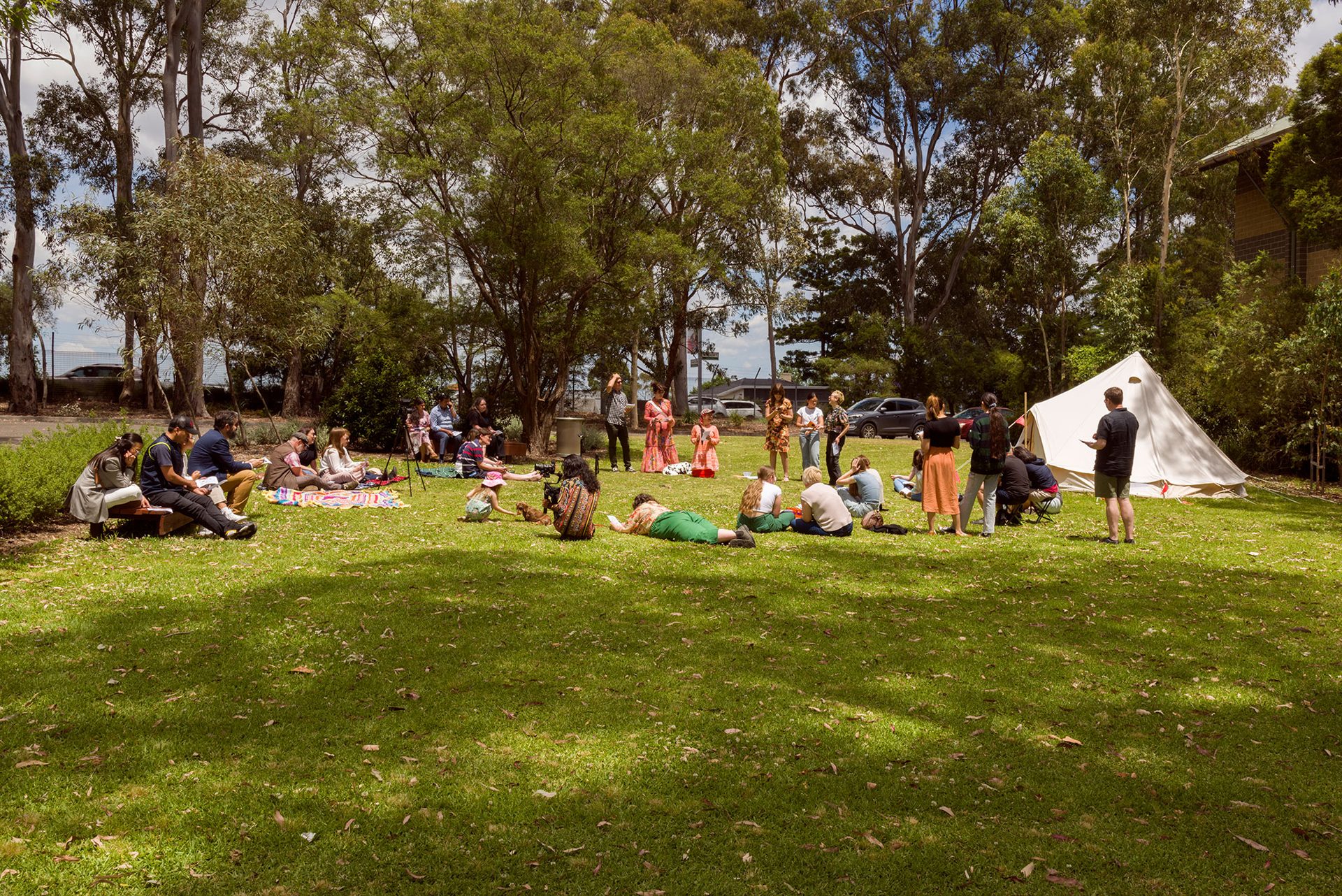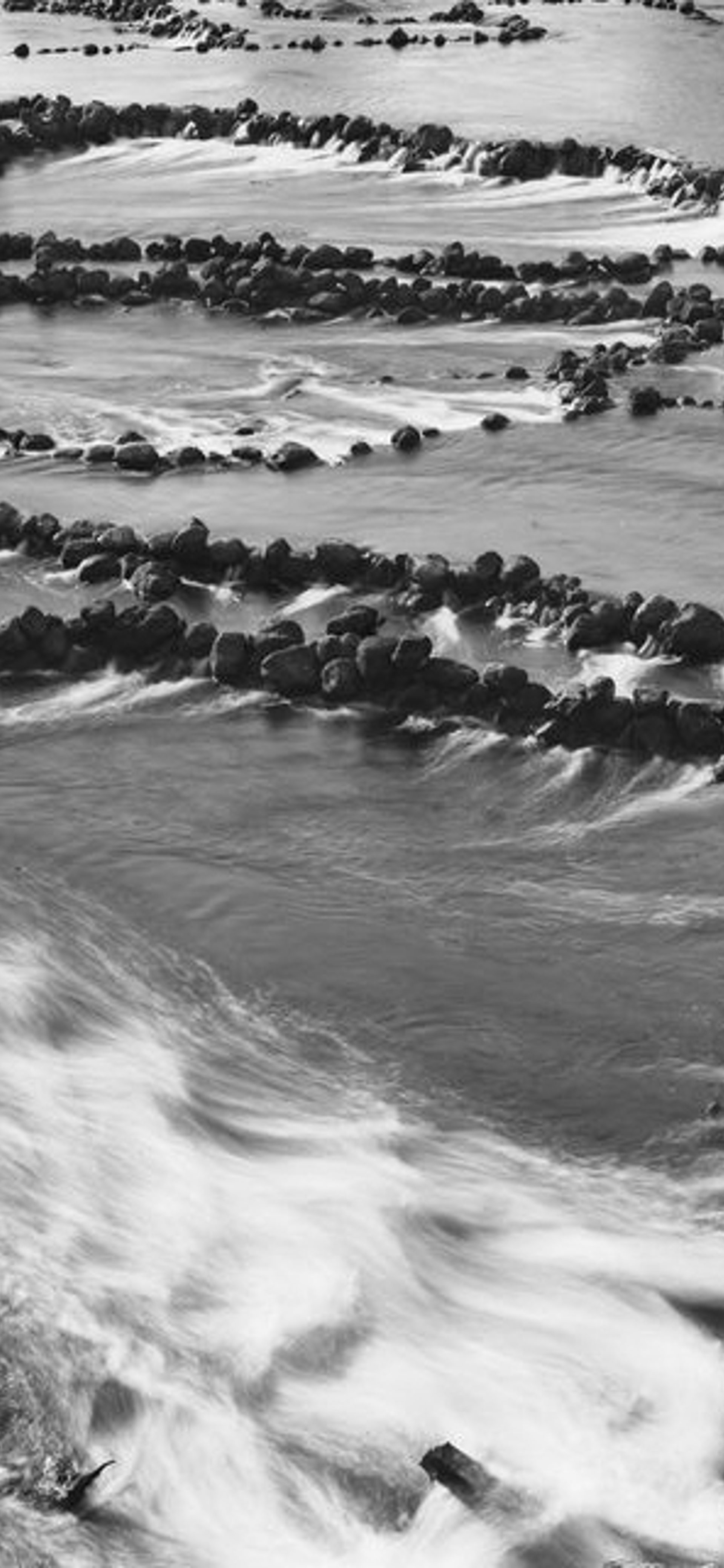Hidden Lessons

Who do we learn with? Where do we learn? What do we learn with?
Hidden Lessons created in Sydney on Darug Land over six months, is the culmination of a student-led, pedagogical project that encourages learners to interrogate their own educational experience: who we learn with, where we learn, and what we learn with in the wake of Covid-19, incorporating objects of everyday life from the Powerhouse collection.
The students from Our Lady of Mercy College, Parramatta, took part in this project developed and led by Lleah Smith, Artistic Associate of Powerhouse and Nadia Odlum, Artist in Residence at Parramatta Artists Studios. Through collective knowledge generated in the sessions together learners created their own temporary ‘Museum of Hidden Lessons’ which honours a significant shift in educative practices and invites speculation on how learnings from the pandemic may inform future pedagogical models. This ‘museum’ sits alongside a display of Powerhouse collection objects explored through the project.
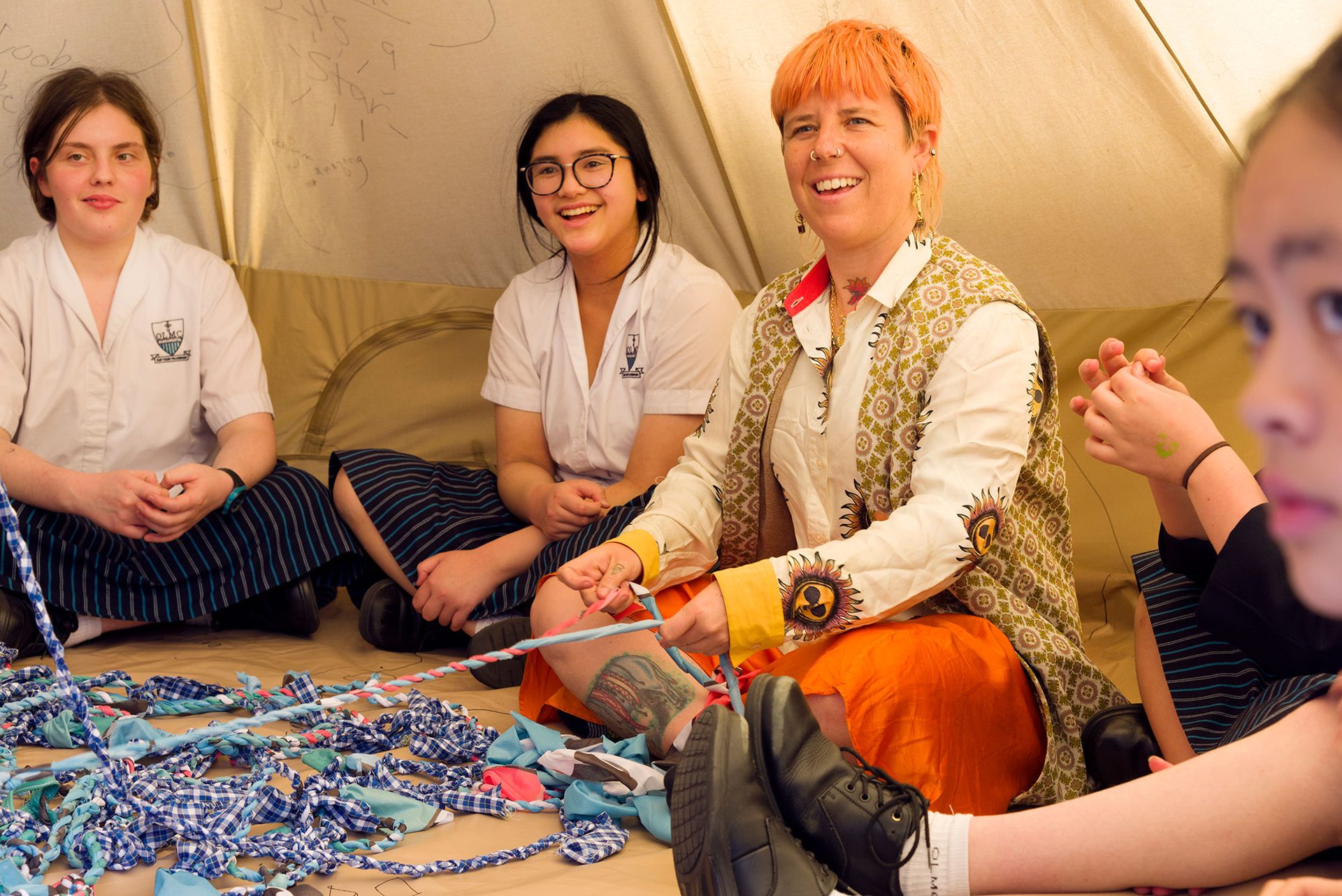
‘Arising from the collective knowledge generated in our sessions together, the learners created their own ‘Museum of Hidden Lessons’’
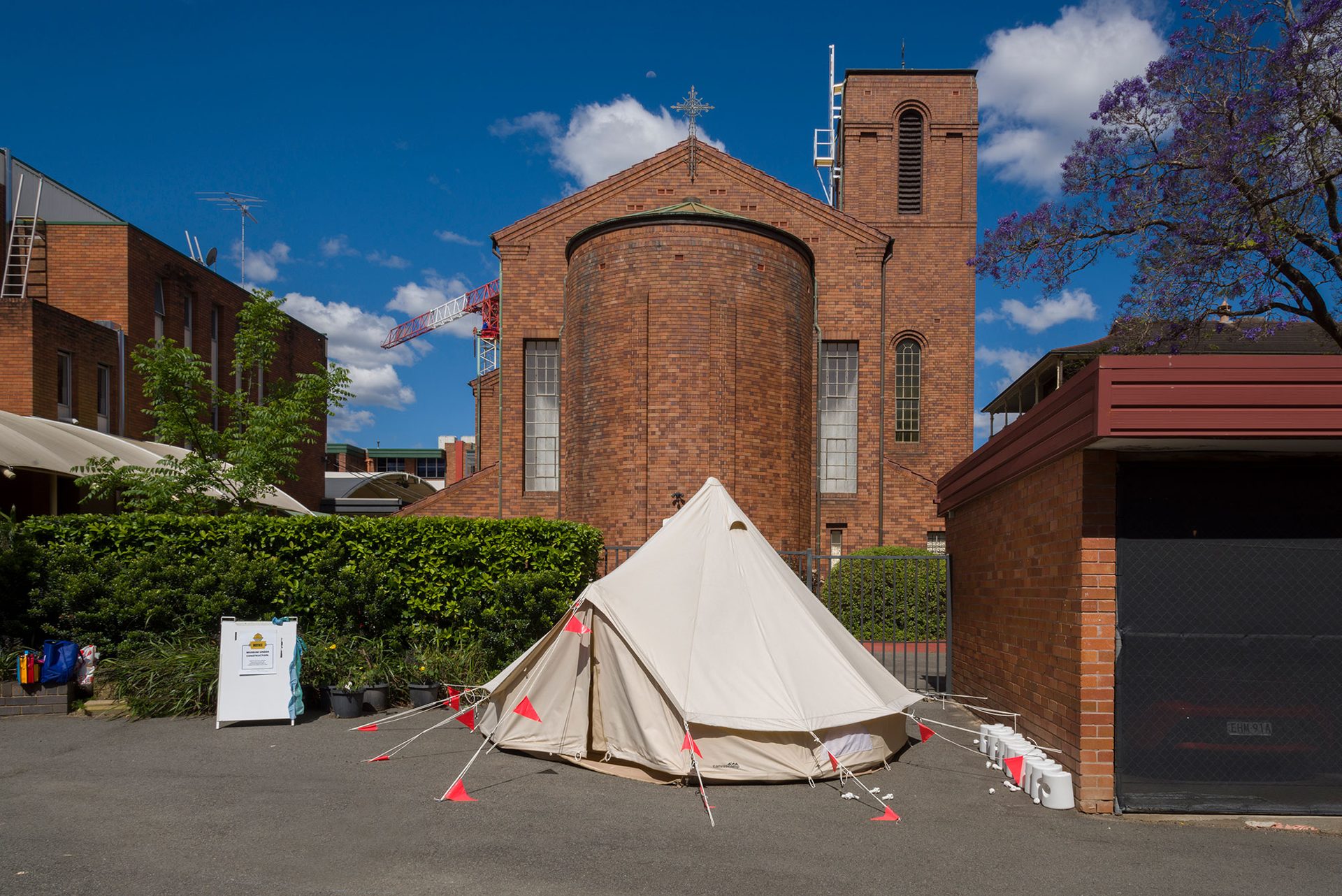
Housed in a temporary structure, a canvas tent, this museum was erected first on the grounds of Our Lady of Mercy College, and later at the Powerhouse Castle Hill, alongside a display of Powerhouse collection objects explored through the project. As ‘caretakers’ of the Museum, the project participants were encouraged to share the project with their peers and school community, by inviting them into the tent and engaging in reciprocal knowledge exchange rooted in dialogical and material practices.
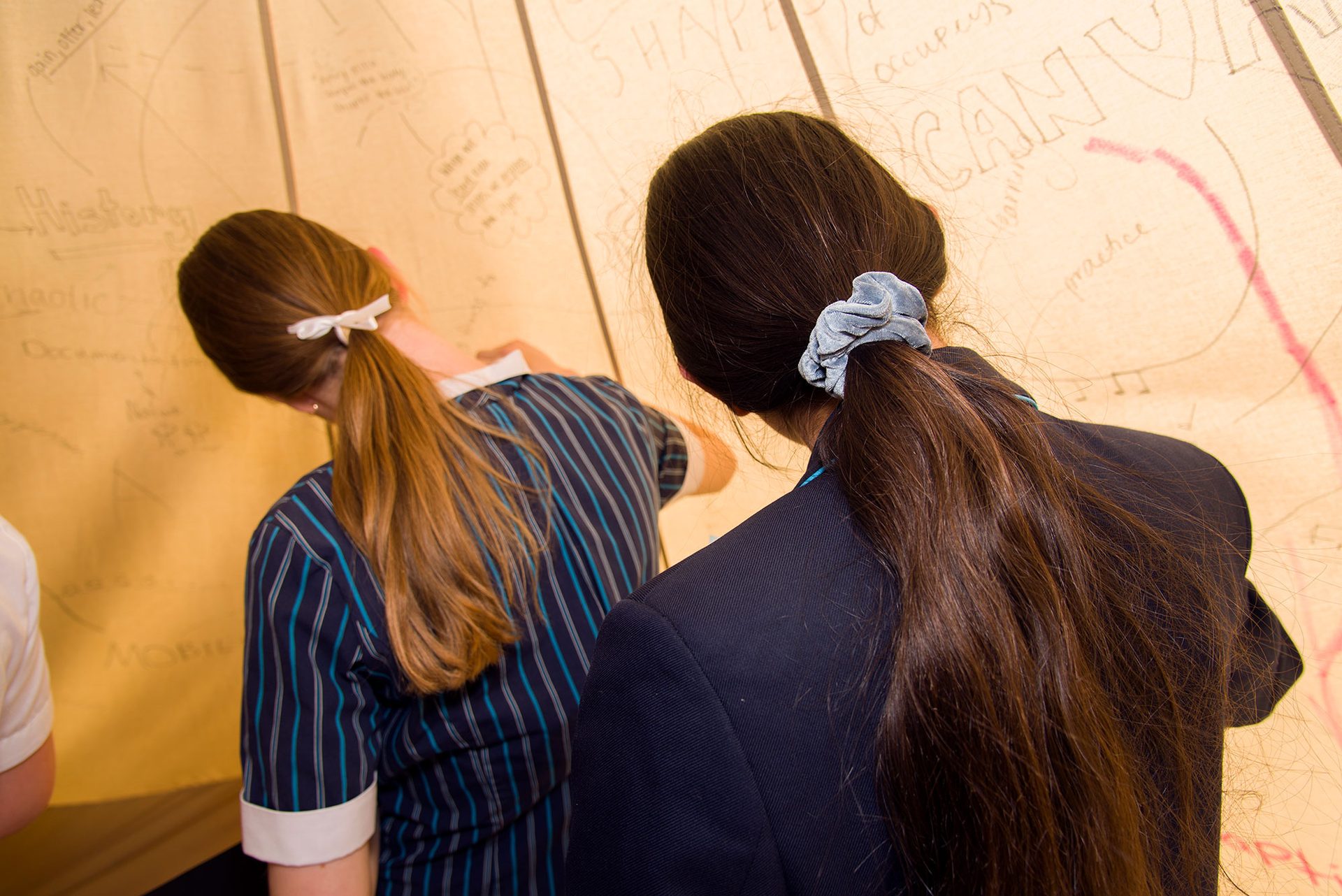
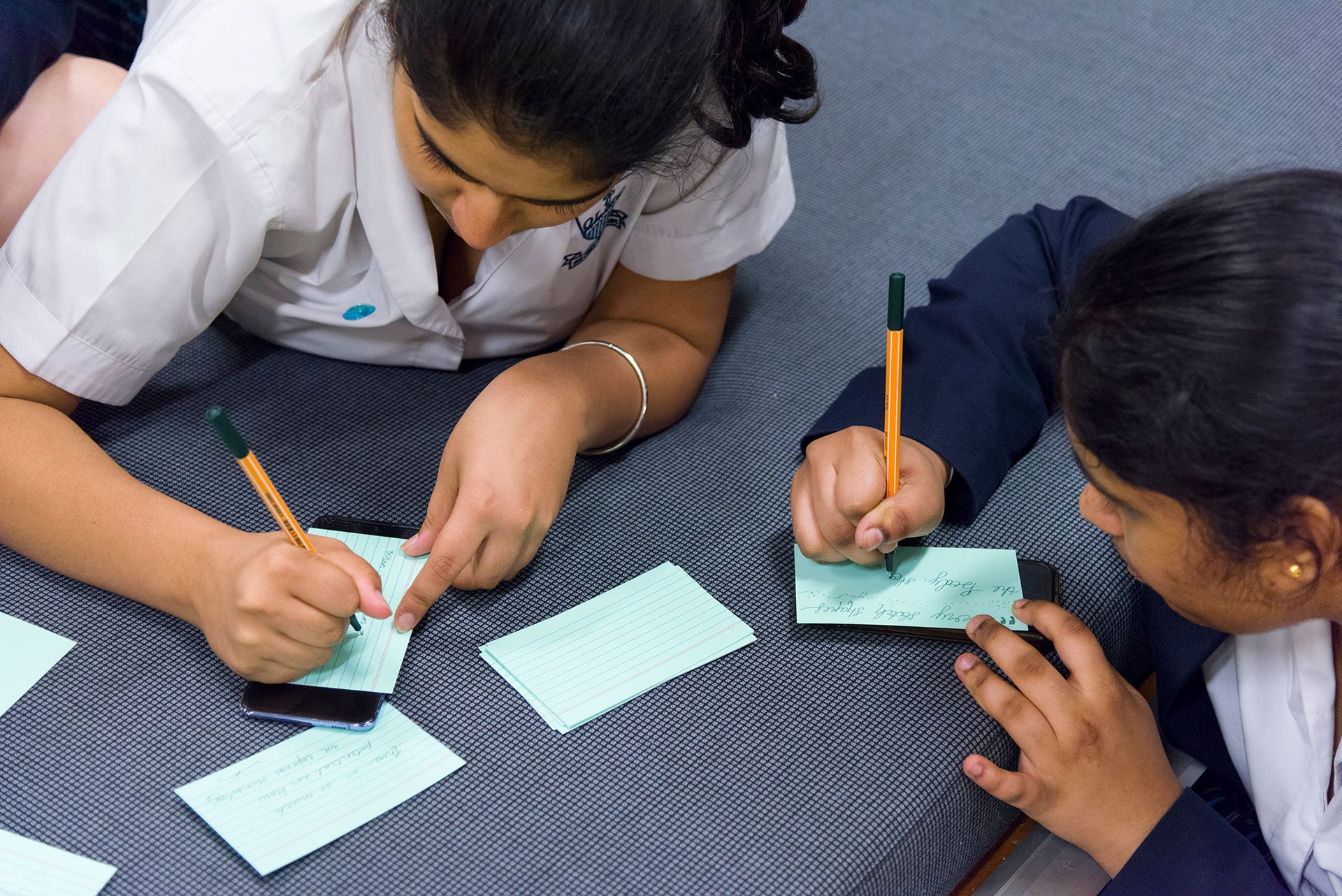
Five Initial Questions (Learners)
How do we question our perspectives on the history of education? Who is this history for? What is its purpose? How do we question the complexities of the lockdown narrative? How do we question why we think certain ways or are taught certain ways? How do we know that these ways are correct or most accurate? Am I the only one having a spiritual experience of this?
Five Shared Findings (Facilitators)
Acknowledging the classroom as artwork, and people as the material enables a complex reimagining of our spatial, relational, and societal dynamics. The needs of the human body must be met. Comfort is vital for effective learning. Snacks are essential! It takes time to empower learners to recognise their agency. Saying ‘you have control over this space’ is not the same as empowering learners to act on that statement. We can create endless versions of ‘flexible classrooms’ and ‘flexible furnitures’ but without the impetus to disrupt architectures, satiate the needs of diverse learners, relinquish control and welcome surprise – the efforts are redundant. Enabling dialogue to flow through the material (weaving) unlocks freedoms in negotiation, conversation and connectivity; resulting in reciprocal learning opportunities and slippery exchanges.
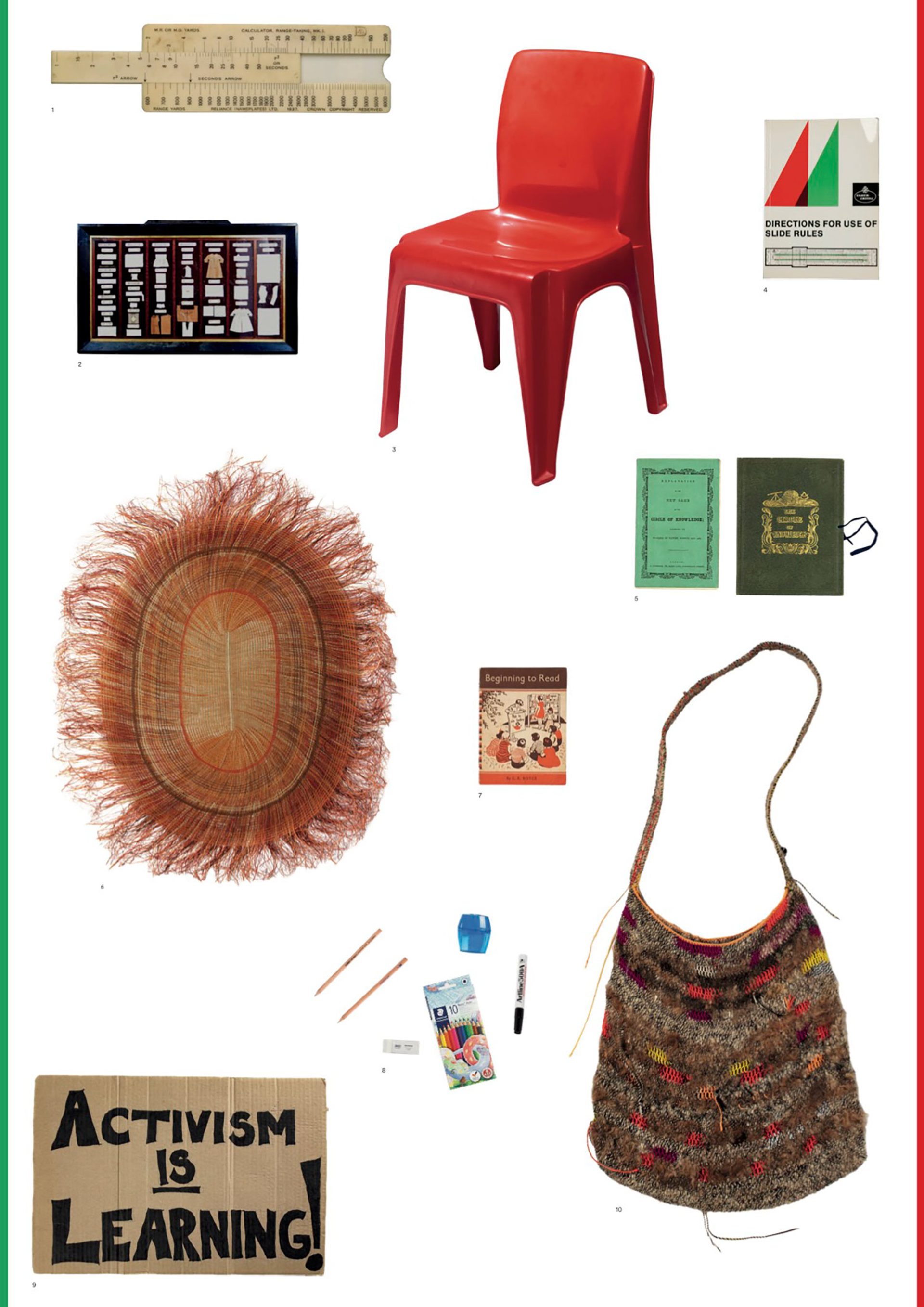
‘Talking and walking with Tammi in the museum archives, looking at the bilum, linking it to the Ursula Le Guin essay, The Carrier Bag Theory of Fiction, which talks about the carrier bag as the first cultural technology. Right after we looked at this object, we looked at the Auburn North Public School’s learning from home pack and noted the tote bag that the materials came in – the contemporary carrier bag’
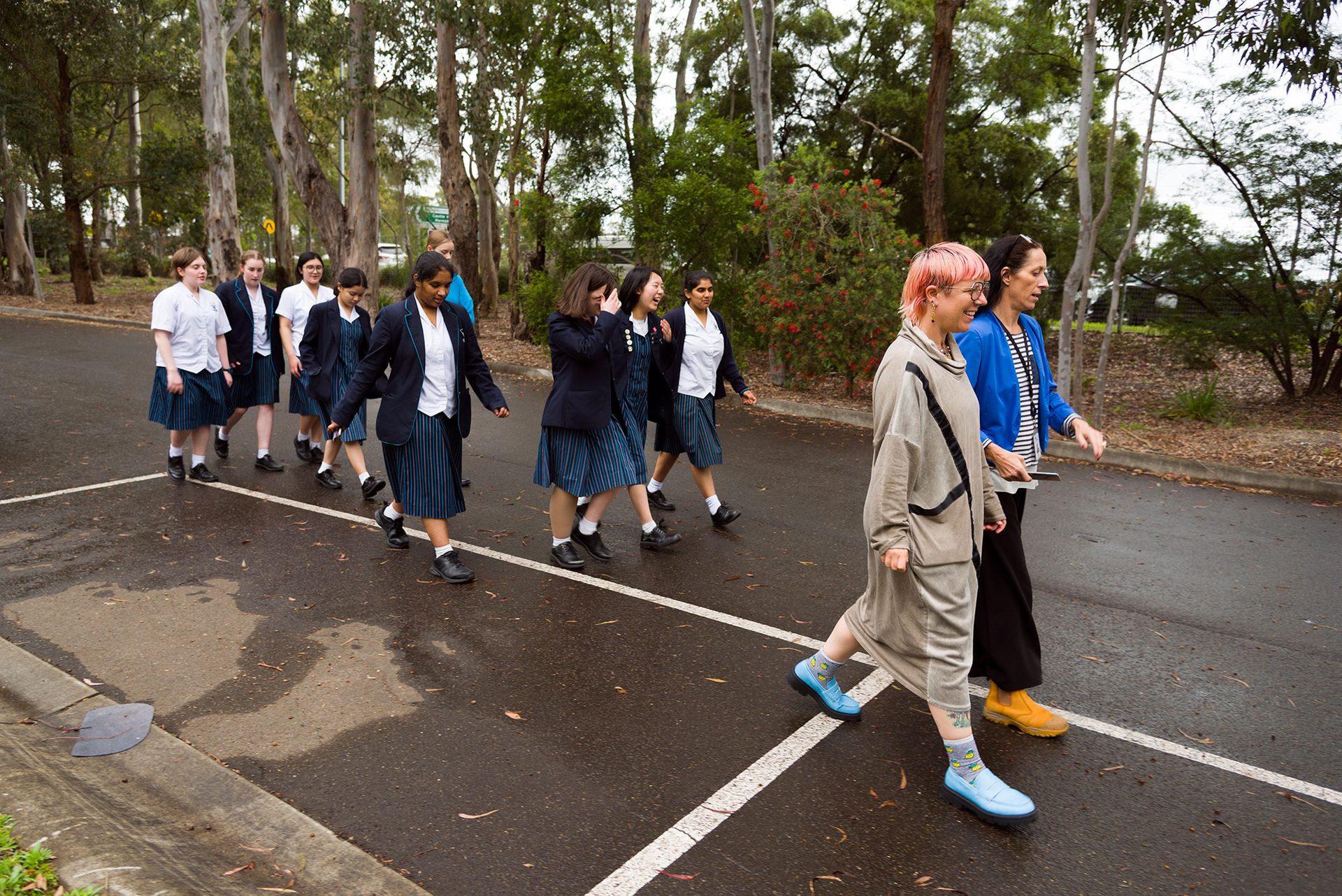
‘The energy of bringing archives to life. Before knowing Tammi was a dancer, it was felt. Her ability to bring what are often thought of as ‘static’ objects to life with the body was = power. She made me question the ways that we think of collections and archives; I am excited by the potential of bringing this bodily activation to learners’
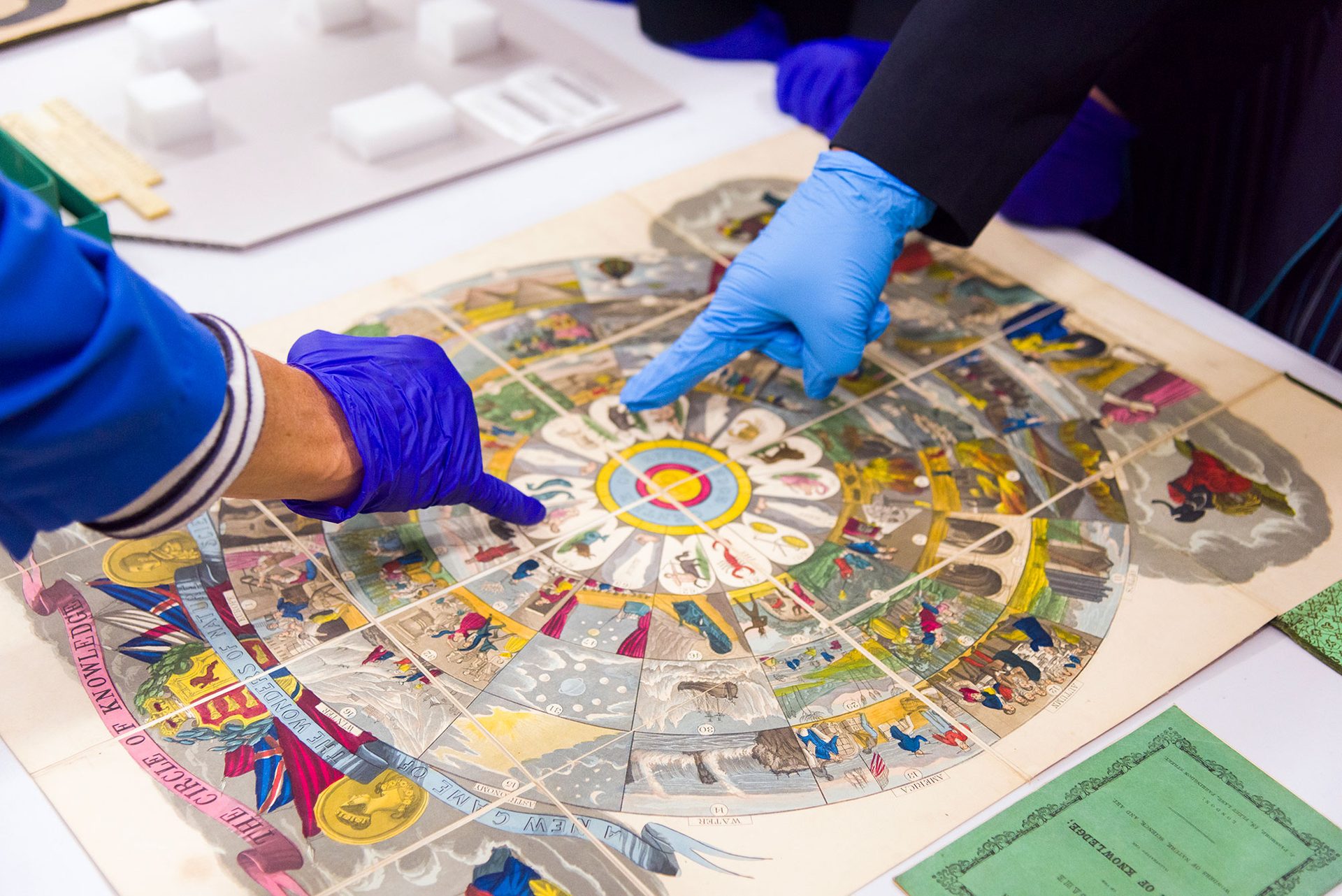

‘It has been fascinating to hear the learners describe objects from their own personal lives, then very intuitively use this to spark speculation on the lives that surrounded objects in the museum collection’

Our Gift: ‘Gathering(s) take flight’
Materials: A4 paper, pens or pencils.
This is a collective mind mapping activity. Seat a group of learners in a circle. Each person has a piece of paper and a pencil.
Give the group a question, or provocation. Each person must write (or draw) something within 10 seconds that relates to the provocation. Then, they pass their paper to the person to the left.
Repeat.
Repeat until the pages are filled, or the minds are exhausted.
Observe your collective mind maps. Comment on commonalities, repeated ideas, unusual connections.
Fold the mind maps into paper planes.
Climb to a high place. Launch them into the air. Allow your gathering(s) to take flight!
Suggested provocations: Who do we learn with? Where do we learn? What do we learn with?
